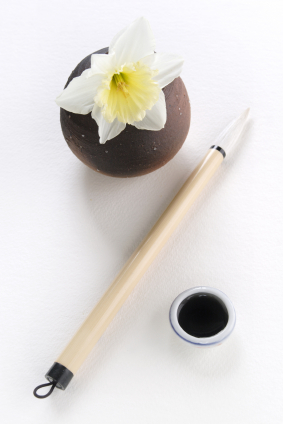Examples of Haiku Poems

History and Structure of Haiku Poems
A haiku poem consists of three lines, with the first and last line having 5 moras, and the middle line having 7. A mora is a sound unit, much like a syllable, but is not identical to it. Since the moras do not translate well into English, it has been adapted and syllables are used as moras.Haiku started out as a popular activity during the 9th to 12th centuries in Japan called “tanka.” It was a progressive poem, where one person would write the first three lines with a 5-7-5 structure, and the next person would add to it a section with a 7-7 structure. The chain would continue in this fashion. So if you wanted some old examples of haiku poems, you could read the first verse of a “tanka” from the 9th century.
The first verse was called a “hokku” and set the mood for the rest of the verses. Sometimes there were hundreds of verses and authors of the “hokku” were often admired for their skill. In the 19th century, the “hokku” took on a life of its own and began to be written and read as an individual poem. The word “haiku” is derived from “hokku.”
The three masters of “hokku” from the 17th century were Basho, Issa, and Buson. Their work is still the model of haiku writing today. They were poets who wandered the countryside, experiencing life and observing nature, and spent years perfecting their craft.
Haiku Poems From the Masters
A review of haiku poems is an excellent way to become familiar with this form of poetry. Remember that in translation, the moras won’t be the same as syllables. In Japanese, there are 5 moras in the first and third line, and 7 in the second, following the 5-7-5 structure of haiku.Basho Matsuo
Here are three examples of the haiku of Basho Matsuo, the first great poet of haiku in the 1600s:An old silent pond...
A frog jumps into the pond,
splash! Silence again.
Autumn moonlight—
a worm digs silently
into the chestnut.
Lightning flash—
what I thought were faces
are plumes of pampas grass.
Yosa Buson
Three examples of the haiku of Yosa Buson from the late 1700s are offered here:A summer river being crossed
how pleasing
with sandals in my hands!
Light of the moon
Moves west, flowers' shadows
Creep eastward.
In the moonlight,
The color and scent of the wisteria
Seems far away.
Kobayaski Issa
Here are three haiku from Kobayashi Issa, a haiku master poet from the late 1700s and early 1800s:O snail
Climb Mount Fuji,
But slowly, slowly!
Trusting the Buddha, good and bad,
I bid farewell
To the departing year.
Everything I touch
with tenderness, alas,
pricks like a bramble.
Natsume Soseki
Natsume Soseki lived from 1867 - 1916. He was a novelist and master of the haiku. Here are a couple of examples of his poems:Over the wintry
forest, winds howl in rage
with no leaves to blow.
The crow has flown away:
swaying in the evening sun,
a leafless tree.
Recent Poems
Following are some recent examples of haiku poems:In the coolness
of the empty sixth-month sky...
the cuckoo’s cry. - Masaoka Shiki
Whitecaps on the bay:
A broken signboard banging
In the April wind. - Richard Wright
Lily:
out of the water
out of itself - Nick Virgilio
ground squirrel
balancing its tomato
on the garden fence - Don Eulert
As the wind does blow
Across the trees, I see the
Buds blooming in May
I walk across sand
And find myself blistering
In the hot, hot heat
Falling to the ground,
I watch a leaf settle down
In a bed of brown.
It’s cold—and I wait
For someone to shelter me
And take me from here.
I hear crackling
Crunch, of today’s new found day
And know it won’t last
Falling to the ground,
I watch a leaf settle down
In a bed of brown.
A cricket disturbed
the sleeping child; on the porch
a man smoked and smiled.
I'm turning over
look out and give me room there
you cricket, you.
Limericks and Haiku
There are numerous types of poems, from silly limericks to the serious dramatic poetry. Limericks are like haiku, in that they are short poems with a certain number of lines.Following is an example of a funny limerick by Edward Lear:
There was an Old Man with a beard,
Who said, 'It is just as I feared!
Two Owls and a Hen,
Four Larks and a Wren,
Have all built their nests in my beard!'
Remember, haiku is more than a type of poem; it is a way of looking at the very nature of existence.
No comments:
Post a Comment
Please leave a comment-- or suggestions, particularly of topics and places you'd like to see covered